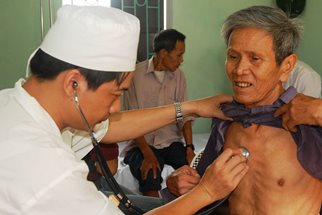Playing is Learning
Medical Physical Diagnostic Methods
October 11th, 2016
| Ads | ||
|
Play the Challenge
|
||
|
A New Word is Coined A new Character is revealed A new Game is Afoot |
An Edutainment Adventure Based on Three Rounds of Investigations
|
|
|
Welcome to the World of PROFESsee™by seeCOSM™ PROFESsee™ is my title. I am the perpetual learner, in pursuit of knowledge, wisdom and truth. I derived my name from professor |
 |
|
|
Technology continues to influence medicine and diagnostics methods, with different specific diagnostic test created by scientists and technologist for specific diseases. Despite these advances, the place of physical examination and diagnostics cannot be displaced, at least not yet. For starters, certain fields like Dermatology (skin), Neurology (nervous system), Psychiatry (mental) and Rheumatology (musculoskeletal) still depend heavily on physical examinations and patient-doctor interaction. Physical examination has been around for over 6500 years. It dates back to the Chinese empire and has evolved through the path of many nations (especially Egypt), and in the hands of physicians such as Hippocrates, Osler and Taussig. Osler himself noted this of physical observation and diagnostics when he said, “the whole art of medicine is in the observation”. One then wonders what the future holds for physical diagnostics with current trends suggesting its erosion by technological breakthroughs. With a report in the journal of ethics claiming levels of competence in among physicians are “disturbingly low” when compared to over ten years ago. This surely signifies a dangerous trend, and with advances in technology assured, the trend will only continue to shoot downwards. Physical diagnostics are crucial in the patient diagnostic and treatment conduit and its benefits are far reaching. Apart from being low-risk (no needles), fast (sometimes as low as 10 minutes or even less), helping physicians to rule out some illnesses and their tests, and helping doctors catch diseases early, physical diagnostics foster a better relationship between patient and doctor. A better doctor-patient relationship improves trust, confidence, and keeps the patient engaged. An engaging patient is more open to disclosing certain information that could be of help to the physician. This is not an article canvassing for less use of technology (far from it!), rather, the focus is to suggest that physical diagnostics still has its role in the diagnostics and treatment conduit of a patient’s medical visits. This is because the difference between quality care and otherwise is sometimes the relationship between the doctor and the patient. I will leave you with this quote by Osler, “Learn to see, learn to hear, learn to feel, learn to smell and know that by practice alone can you become experts”. If there’s a takeaway, it is that going forward, physical examination and technology can definitely coexist. Can you Zoom to the diagnostic methods? Image courtesy of: http://www.army.mil/ |
||
Latest News / Events
E-mail [email protected]
The Professee™ Newsletter Beta
http://www.seecosm.com/
http://www.seecosm.com/

